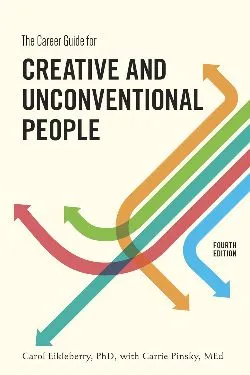
I loved this book; it wasn’t anything too extensive, but it helped me to see that I don’t have to necessarily find professions in the creative field to do serious creative work. One of the greatest things about the book is its usage of Holland Types. This means that it takes seriously jobs with creative content even if they aren’t in classically artistic domains.
Most of the book is spent reassuring readers that they do not need to suffer. This is an important point, as one of the greatest indicators of job satisfaction is overlap between the job’s content and one’s own skills and proficiencies. When tasks and abilities are misaligned, things come to feel wrong and each day becomes a war of attrition.
The book is brief: it contains approximately 150 pages of original content, and the remainder is a list of jobs (with Holland codes, descriptions, and median salaries) where creativity is important. Teaching roles are in here, as are research positions, work on the web, the creation of manual goods, performing roles, marketing, and so many more. I skimmed through most of the last section, stopping to read pages on occupations that I thought were more interesting.
I also found reassurance in remembering that the list of occupations are, by no means, comprehensive. Eikleberry sought to include positions where “A” (artistic) appeared in one of the three letters of the Holland code. However, there are other creative jobs out there–sometimes that require a lot of artistic ability–but other skills are more important. For instance, “educational consultant” has a Holland code of SCE (or thereabouts), but it requires seriously creative solutions.
Ultimately, The Career Guide for Creative and Unconventional People is one of the better places to start for those who look to break out of standard, socially-acceptable roles. It’s illuminating, although a bit dated at this point. Hopefully, there will be a new edition in the near future.